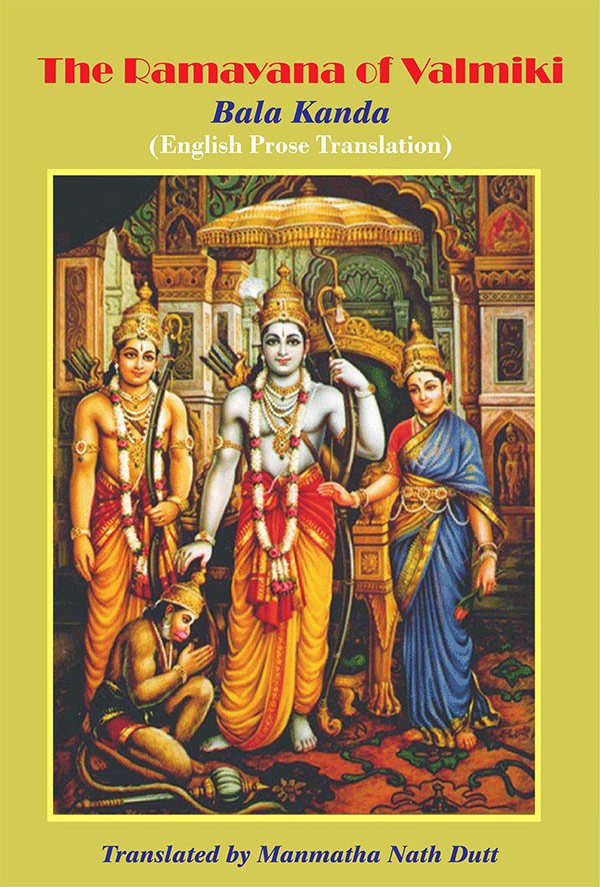Ramayana of Valmiki
by Hari Prasad Shastri | 1952 | 527,382 words | ISBN-10: 9333119590 | ISBN-13: 9789333119597
This page is entitled “description of lanka” and represents Chapter 39 of the Yuddha-kanda of the Ramayana (English translation by Hari Prasad Shastri). The Ramayana narrates the legend of Rama and Sita and her abduction by Ravana, the king of Lanka. It contains 24,000 verses divided into seven sections [viz., Yuddha-kanda].
Chapter 39 - Description of Lanka
Having passed the night on Mount Suvela, the valiant monkey generals surveyed the woods and groves of Lanka and observing them to be so extensive, agreeable, pleasant, vast and wide, marvellous to behold, they were seized with admiration.
Champakas, Ashokas, Bakulas, Salas and Talas abounded; Tamalas, Hintalas, Arjunas, Nipas, Saptaparnas in full flower, Nagas, Tilakas, Karnikaras and Patalas grew on every side. The trees with their flowering crests, round which magnificent creepers twined, gave Lanka a brilliant appearance which she owed also to the borders planted with diverse flowers and red and tender buds as also innumerable shady avenues. The blossom and fragrant fruit with which the trees were laden caused them to resemble men adorned with jewels or the ravishing Caitaratha, the equal of the Nandana Gardens, a grove resplendently green in all seasons, filled with swarming bees and sparkling with beauty. Then the valiant monkeys able to change their shape at will penetrated into those groves frequented by waterfowl intoxicated with love and with honey bees where the branches of the trees were filled with cuckoos and resounded to the notes of the shrike and the cry of the osprey and, as they entered there, a breeze redolent with the scent of flowers blew like a soft breath.
Meanwhile some of the leaders broke away from the monkey ranks and, with the permission of their prince, approached that paved city. Terrifying the birds, deer and elephants, they shook Lanka with their roaring, excelling as they did in shouting and, in their immense ardour, they trampled down the earth so that the dust rose in clouds under their feet.
Bears, lions, buffalo, wild elephants, antelopes and birds, alarmed by the noise, spread over the ten points of the horizon.
The Trikuta Mountain had an exceedingly lofty summit that appeared to touch the skies; it was covered with blossom, sparkling like gold, a hundred leagues in extent, stainless, graceful to behold, smooth, inaccessible in height even to birds and could not be scaled even in thought, much less in reality; it was on this promontory that Lanka was built of which Ravana was the highway.
Ten leagues wide, twenty in length, with its tall gates which resembled white clouds and its ramparts of gold and silver, it was a very marvel! Palaces and temples were the splendid decoration of that city, as clouds at the end of summer are to the region of Vishnu that is found between earth and heaven.
In Lanka, a building of a thousand pillars artistically constructed, resembling the peak of Kailasha which seemed to lick the firmament, was to be seen. This was the retreat of the Indra of the Titans and the ornament of the city, guarded constantly by a hundred titans. Ravishing with its gold, the mountains served as its decoration and it was dazzling with its rich parks and many squares re-echoing to the song of birds of every kind, frequented by deer, covered with various flowers, inhabited by titans of every degree, and that opulent city of immense resources resembled the celestial regions.
Beholding that auspicious capital, the valiant elder brother of Lakshmana was seized with astonishment and Rama with his vast army contemplated that citadel filled with treasure, abundantly provisioned, garlanded with palaces, exceedingly strong, with its powerful engines of war and solid gates.
